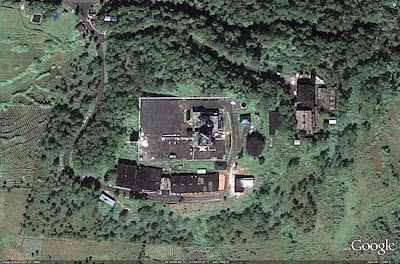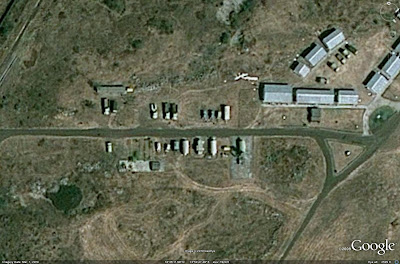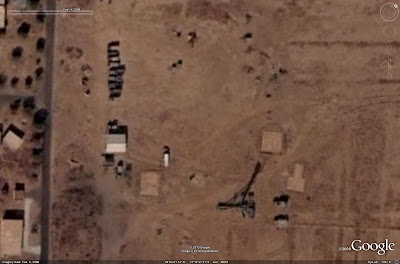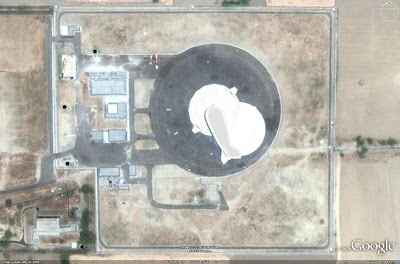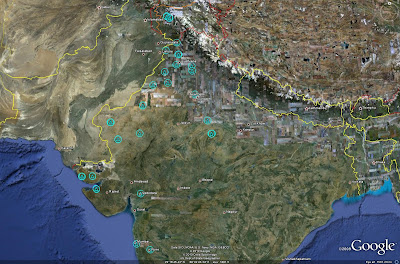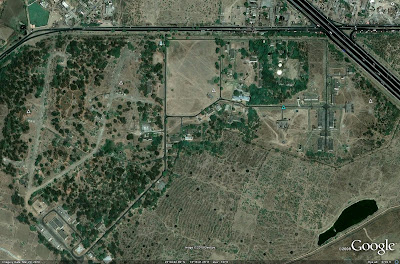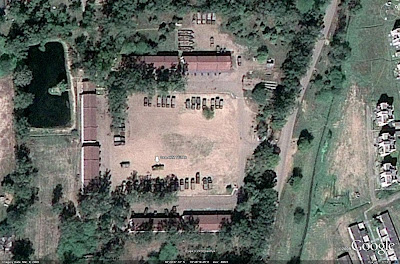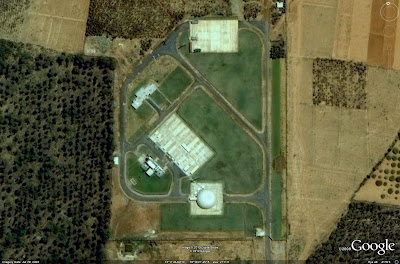JASSMs are launced beyond S400 range. They are stealth. And if JASSM fails, those SOF guys kill the S400 crew with puukko and drive the S400 to our lines...
Look at their robust SAM network in 2008 when they did not have S 400.
..............................................
Currently deployed strategic air defense assets provide the Kaliningrad Oblast with a robust, modern air defense network. System deployment indicates that priority is clearly given to defending the western half of the Oblast, home to the majority of the significant military facilities and the Baltic Sea Fleet.
EW Coverage
Early warning coverage of the Kaliningrad Oblast is provided by six radar facilities. One of these facilities is home to a 300 km range 5N64S (BIG BIRD B) battle management radar controlling the Oblast's S-300PS (SA-10B GRUMBLE) batteries. Four 36D6 (TIN SHIELD) radar sites with detection ranges of 165 km are also present providing additional coverage, and a further EW site features legacy radar assets providing additional support to the network.
The following image depicts the locations of the Kaliningrad Oblast's EW sites. 36D6 sites are denoted by triangles, the 5N64S site is denoted by a hexagon, and the legacy EW site is denoted by a square.
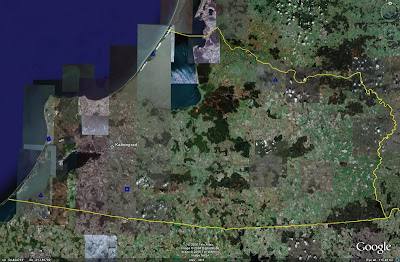
The coverage of the 5N64S radar site provides the network with the ability to monitor the airspace over the entire Oblast, with coverage extending into Belarus, Latvia, Lithuania, and Poland. A significant portion of the Baltic Sea is also covered, extending to the shoreline of Sweden. The 36D6 sites, one of which being co-located with an S-300PS battery, are also situated to provide coverage of the entire Oblast as well as portions of Latvia, Lithuania, and Poland. The 36D6 radars are also capable of monitoring an off-shore swath of airspace, albeit to a lesser degree than the longer-ranged 5N64S. The off-shore reach of the Kaliningrad Oblast's EW radars allows them to operate with SAM batteries to provide air defense for Baltic Sea naval vessels operating in the area.
The positioning of the various radar sites provides the network with a significant degree of overlapping EW coverage. The 36D6 radars can also provide targeting support to the S-300PS batteries should the 5N64S radar be rendered inoperable. While this would result in a loss of range with respect to target acquisition, the 36D6 sites are positioned in a manner that ensures that the engagement zones of the S-300PS batteries are not affected. The relatively low, flat terrain in the surrounding areas also ensures that a reliance on the less sophisticated 36D6 radar sets, which can be mounted on 40V6 mast assemblies for increased low-altitude detection capability in areas of rough terrain, would not result in a significant degradation of target acquisition functions.
The following image depicts the coverage of the Kaliningrad Oblast's 5N64S and 36D6 EW sites:
 Active Sites
Active Sites
Strategic air defense of the Kaliningrad Oblast is provided by six SAM sites. Five of these sites are occupied by mobile S-300PS SAM systems with maximum engagement ranges of 90 km. The sixth site is the sole remaining S-200 (SA-5 GAMMON) SAM site still actively serving with the Russian air defense network. The S-200 has a maximum engagement range of 300 km.
The following image depicts the operational SAM sites in the Kaliningrad Oblast. S-300PS sites are denoted by red diamonds, with the S-200 site being denoted by a purple diamond.
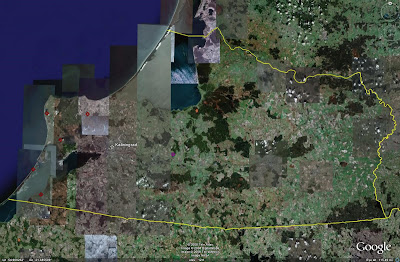
The S-300PS sites are all situated within 11 kilometers of the shoreline in the westernmost portion of the Oblast. Their proximity provides a layered air defense capability over the city of Kaliningrad and the Baltic Sea home port. The multiple target engagement capability, 6 targets per battery, and effectiveness of the system against low RCS targets represents a significant threat to any potential airborne aggressor. The deployment of S-300PS batteries in lieu of more modern S-300PM (SA-20 GARGOYLE) batteries appears at first glance to be intended to protect the more advanced variants from being exploited by ELINT collection platforms in the area, potentially enabling vulnerabilities to be discovered that would put areas protected by S-300PM batteries at increased risk during times of war. However, following the delivery of the S-300PMU-1 to NATO member Greece and deployment of S-300PMU-1 batteries along the Chinese coastline, exposing them to EP-3 ELINT aircraft, it is more likely that the S-300PS was retained for air defense of Kaliningrad because deployment of the longer-ranged S-300PM was not deemed necessary to ensure adequate air defense coverage.
The S-200 battery is centrally located within the Oblast, but the system's 300 kilometer maximum range allows it to range targets inside of Poland, Latvia, and Lithuania. The system also offers a significant off-shore capability. While the S-200 is no longer a reliable system for engaging maneuverable targets such as fighter aircraft, it remains a significant threat to ISR platforms. The significant reach of the system both offshore and into the surrounding NATO member states would provide Russian air defense commanders with the ability to threaten ISR platforms operating in close proximity to Kaliningrad but remaining outside the engagement zones of the S-300PS batteries.
The following image depicts the engagement zones of the Kaliningrad Oblast's strategic SAM batteries:
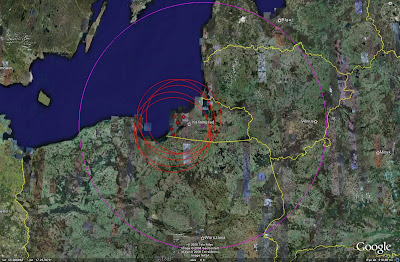
Imagery of the S-200 site, seen below, suggests that two of the three batteries remain active, allowing the system to potentially engage two targets simultaneously.
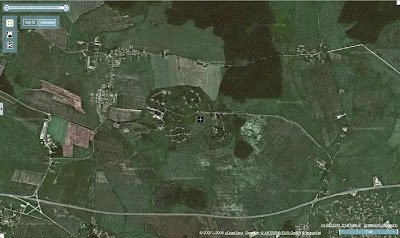 Inactive Sites
Inactive Sites
There are currently nine inactive strategic SAM sites that have been identified within the Kaliningrad Oblast. These sites are prepared S-75 (SA-2 GUIDELINE), S-125 (SA-3 GOA), and S-300P sites. One tactical 2K12 (SA-4 GANEF) deployment site has also been located and is included here although tactical SAM coverage is outside the scope of this article. During hostilities, these inactive sites could be exploited to provide dispersal sites for the Oblast's resident S-300PS batteries. While only two of the sites are operationally configured for the S-300P, all of the sites would at least provide a degree of protection for the components thanks to the presence of different revetment configurations. Alternatively, S-300P series batteries could be deployed to the area to take up residence at some or all of the sites to bolster the air defense capability of the Oblast.
It should be noted that the 5N83 battle management complex employed by the S-300PS, which includes the 5N64S battle management radar, is capable of supporting six S-300PS batteries. Were there to be multiple S-300P series batteries introduced into the region, one or more additional 5N83 complexes would be needed to be deployed as well.
he following image depicts the overall coverage areas of both the SAM and EW assets in the Kaliningrad Oblast. This image highlights the overlapping layout of the entire network, depicting how the EW and SAM sites are positioned to support and defend each other. The multiple target engagement capability of the S-300PS, combined with the expansive EW coverage, allows the Kaliningrad Oblast air defense network to effectively repulse a small-scale strike package, perhaps designed to target and eliminate nuclear missiles in the area. The S-300PS network could engage a total of 30 targets simultaneously, and would be backed up by an Su-27 (FLANKER-B) interceptor unit in the area. Anything less than a full-scale aerial invasion of the Oblast would be an extremely difficult operation to successfully accomplish without risking severe losses and potential failure, inviting a Russian response which could conceivably escalate into an environment where a nuclear exchange is a definite possibility.
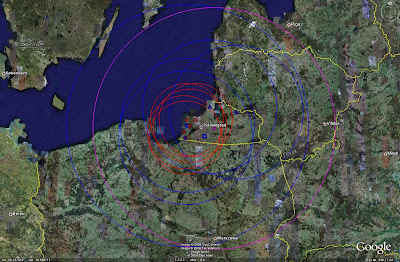 MODERNIZATION
MODERNIZATION
Modernization efforts for the Kaliningrad Oblast's air defense network have been discussed in the open press as far back as 2001. Russian officials have stated that the extant S-200 complex will remain operational until it is replaced by the new S-400 (SA-21). S-400 batteries are currently being assigned to the Moscow air defense network, and it could be assumed that it will be some time before a battery is available for assignment to the Kaliningrad Oblast given Moscow's higher strategic priority. However, given the deteriorating relationship between Russia and NATO, replacing the S-200 complex with the S-400 may take on an increased priority in the near term. It is also possible that 150 km range S-300PM batteries displaced by S-400 units around Moscow could be reassigned to the Oblast to replace the older S-300PS batteries.
Were the SAM units to be upgraded, upgrading the EW network would also be necessary, particularly to support the S-400. The 5N64S battle management radar and associated 5N83 battle management complex would need to be replaced by the newer 30K6 complex and 600 km range 91N6 (BIG BIRD E) radar. A one-for-one replacement of S-300PS batteries by S-300PM batteries would necessitate the presence of a single 30K6 complex, capable of handling up to six S-300P and/or S-400 series batteries. Replacement of the 36D6 radar systems with newer 300 km range 96L6 radar systems is also a possibility as these systems were designed to operate with S-300PM and S-400 batteries.
Postulating the replacement of 36D6, 5N64S, S-300PS, and S-200 units with 96L6, 91N6, S-300PM, and S-400 units respectively, the following image depicts the potential coverage of the future Kaliningrad Oblast air defense network. Two range rings are provided for the S-400, one depicting the 240 km engagement range of the 48N6DM missile currently deployed with the system and one depicting the 400 km engagement range of the future 40N6 missile.
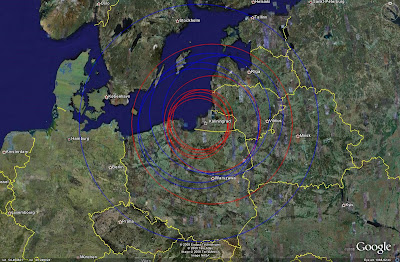
As can clearly be seen, such a modernization of the air defense network would significantly enhance the coverage area. The detection range of the EW assets would enable targets to be detected over the entirety of Poland and the Baltic Sea. Increased engagement ranges allow the western-sited S-300PM sites to combine with the S-400 battery to provide overlapping fields of fire over the entirety of the Oblast, bringing the eastern portion of the territory under the protection of a modern SAM system allowing for potential surface-to-surface missile units to be dispersed over a greater expanse and still remain under the protective umbrella of the network. This capability would potentially allow SSM units to deploy without organic tactical air defense support, aiding in their concealment during wartime as there would not be nearby SAM units giving off tell-tale radar emissions. Increasing the difficulty of locating and targeting any such missile units would increase their effectiveness as a potential nuclear deterrent.
CONCLUSION
As relations between Russia and the NATO powers have progressively deteriorated for a number of factors, to include Western political opinion regarding Russian military action in the Caucasus, insinuations have been made that Russia may place nuclear-armed missiles inside the Kaliningrad Oblast as a counter to American missile defense deployments in Poland and the Czech Republic. Regardless of whether or not this comes to pass, air defense of the Kaliningrad Oblast will continue to be a strategic priority for Russia, helping to ensure the continued security of its foothold inside territory dominated by NATO members.








